How we experienced Venezuela quite differently than expected
‘Very dangerous.’
‘You’ll definitely get mugged, only criminals live there.’
‘They’ve locked up foreigners again, one disappeared at the border.’
That’s how people warned us about Venezuela.
We are quite nervous and our preparations are more intensive than for the other countries we have visited before. We research as much as we can, but there is not much information online. And we also contact other travellers.
‘The nicest people.’
‘Everyone is friendly and helpful.’
‘Wonderful hospitality and beautiful nature.’
That’s what we hear from travellers who were in Venezuela shortly before us. And they give us contacts in the country. We write them. Everyone helps us, answers our many questions and gives us some encouragement. But a certain uncertainty remains.
Venezuela – yes or no?
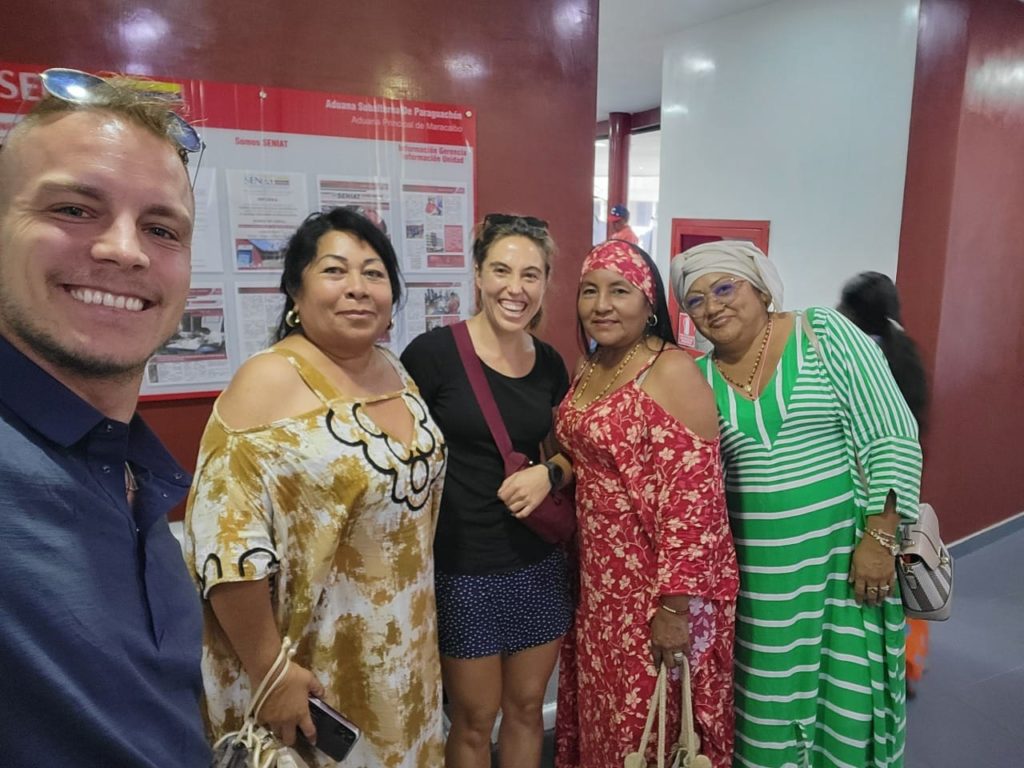
Two years ago, Venezuela wasn’t on our agenda. But during our trip, we kept hearing from others who were travelling to the country. ‘Is it possible now?’ we asked ourselves. That was in 2024, when we were finally convinced to take the plunge. But then the presidential elections came and unrest broke out. Foreigners were increasingly being arrested again. No one really knew exactly what was happening. The media revealed little. The situation was anything but transparent. At the beginning of 2025, one thing is certain for us: no, Venezuela is not an option.
But the weeks pass and we hear a lot of good things again. Things seem to have calmed down… Somehow, we’re tempted. We decide to go looking ourselves. Is what everyone says true? Is it really that dangerous? Are they really that nice? And then, suddenly, we’re already at the border.
A slightly different border crossing
Beforehand, we filled up the car with petrol, hid lots of dollars in notes throughout the car (there are no cash machines to withdraw money) and bought food. We printed out and copied all the necessary documents. Now it’s serious.
In Colombia, the procedure is quick. Some money changers try to rip us off, but a quick call to our Venezuelan contact is enough and we politely decline. Then we head to the other side. I’m getting more nervous. We can park the car in front of passport control; there is hardly anyone queuing. We hand over our passports and a few phone calls are made. We are told to wait. Then a woman in black arrives: the secret service wants to talk to us. ‘Ugh, this isn’t going to end well,’ I think to myself. Not just once that day.
We are kindly invited into a white container. Inside, there are two tables, a computer, a bench and a small coffee machine. Of course, there are also portraits of Venezuela’s most important heads of state (Bolívar, Chávez and Maduro). They ask us about our intentions and our route and search the internet. The data is also forwarded – probably to headquarters in the capital. And they find something.
‘Can you explain this?’ the official asks me, showing me a photo of myself in army uniform. I think to myself: OK, that’s it. This isn’t going to end well.
I explain to him how the photo came about. He nods briefly and continues searching. Eventually, we are given a coffee and a few tips on what to visit in Venezuela. Then he asks us to record a video: we have to introduce ourselves and explain what we plan to do in the country. Everything seems to be sorted out. The official then helps us exchange money without getting a bad exchange rate. Although it’s still not the correct amount, because normally you get more than the official exchange rate, as no one wants Venezuelan bolívares. But then it’s time: we get our passports stamped – Bienvenidos a Venezuela.
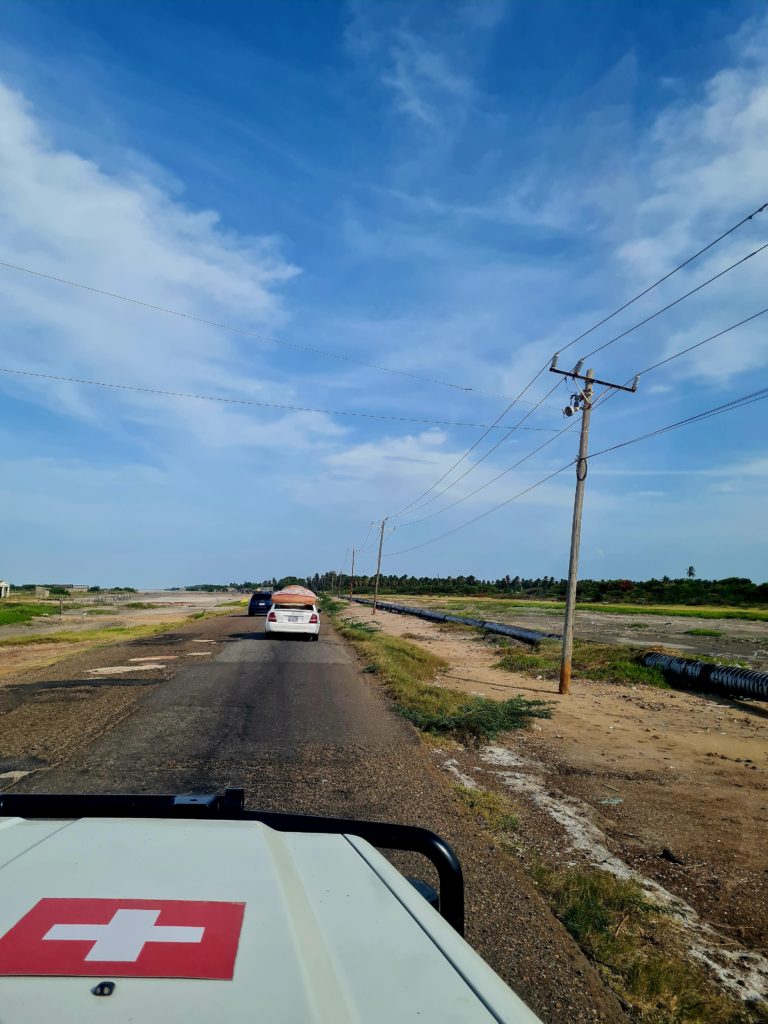
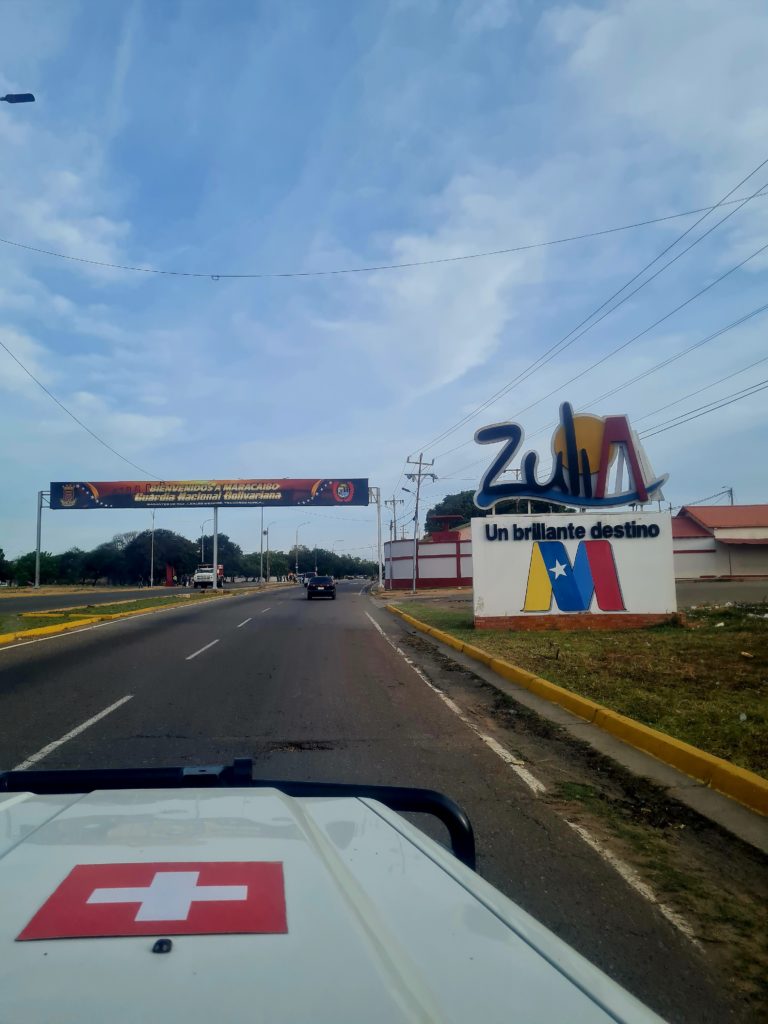
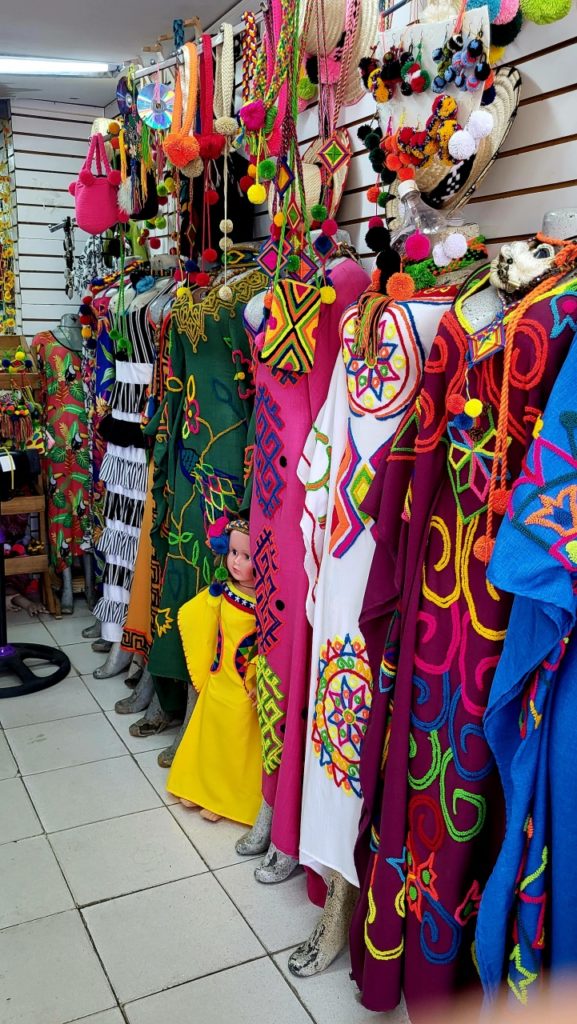
20 checkpoints along 116 kilometres
Two hours later, the car also has the necessary permit, and we are allowed to enter the country. The journey starts towards the city of Maracaibo. It is just under 116 kilometres away. The roads are better than expected; there are a few potholes, but that is normal in this entire region. There are also more checkpoints than we expected. We had been warned about this in advance. We pass a total of 20 checkpoints. Most of them just want to know if we are foreigners and where we are going. That’s enough. But each time we have to slow down and wait for a signal. We have to get used to this, because it will accompany us throughout the entire journey. By the end of our trip through the country, we will have passed 205 checkpoints.
Venezuelan hospitality
There are two toll booths along the way. They cost 30 bolívares everywhere in the country, which is about 30 US cents at the exchange rate when we were there. You can only pay in cash, which is why we had to exchange money beforehand. At the second toll booth, we give the money to the young worker. He asks us if we are foreigners and gives us the money back. ‘Bienvenidos a Venezuela, disfrutad del país’ – ‘Welcome and enjoy Venezuela’. That was our first experience of Venezuelan hospitality. Could it be true what all travellers say?
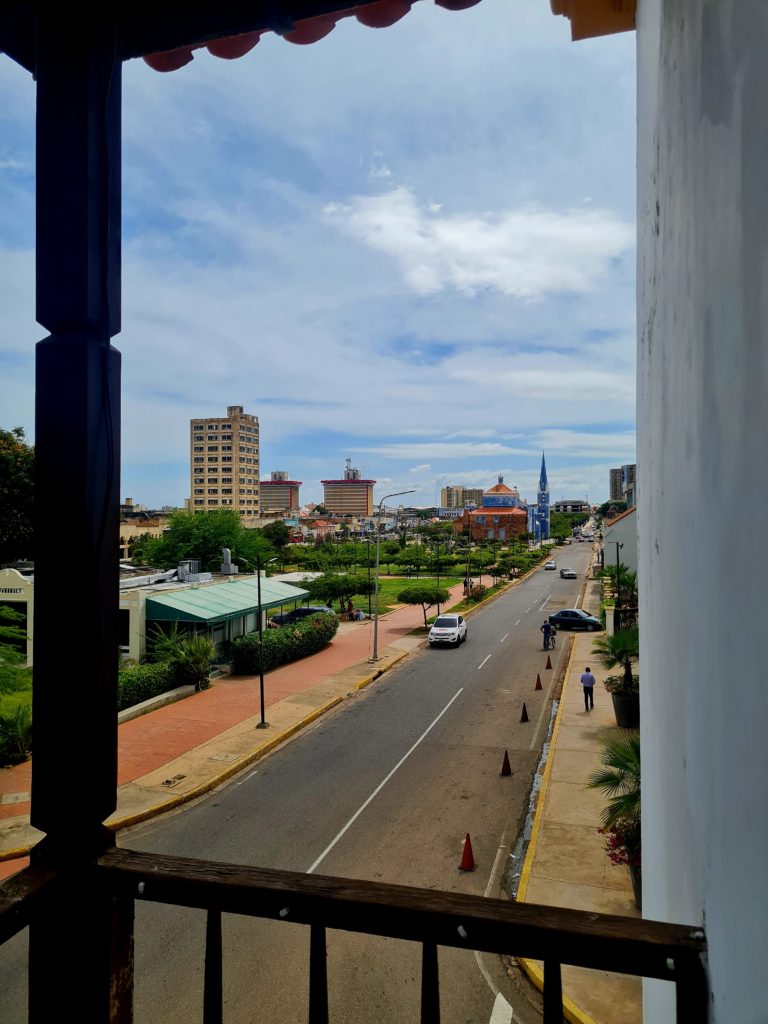
A cheap beer for dinner
Maracaibo is a hot city. The entire region resembles Morocco more than Latin America. The women wear colourful, airy robes that cover their entire bodies and usually headscarves to protect them from the sun.
We arrive in the city at nightfall, feeling a little nervous as it is supposed to be dangerous at night and we have decided to always find a safe place to sleep early enough. We have a contact and a place where we can stay safely. But it’s not that easy to find, and there’s no one there when we arrive. However, the neighbours help us and we manage to reach the owner. He sends someone over to open the place. It’s not nice, actually quite dirty. We’d rather not use the toilets, and there’s no shower either.
But the view of the Maracaibo Bridge is priceless, and the food in the restaurant next door is prohibitively expensive. We are tired, don’t know how things work yet, and decide on the cheapest thing on the menu, a beer, and then off to bed.
A journey back in time to the US 1970s
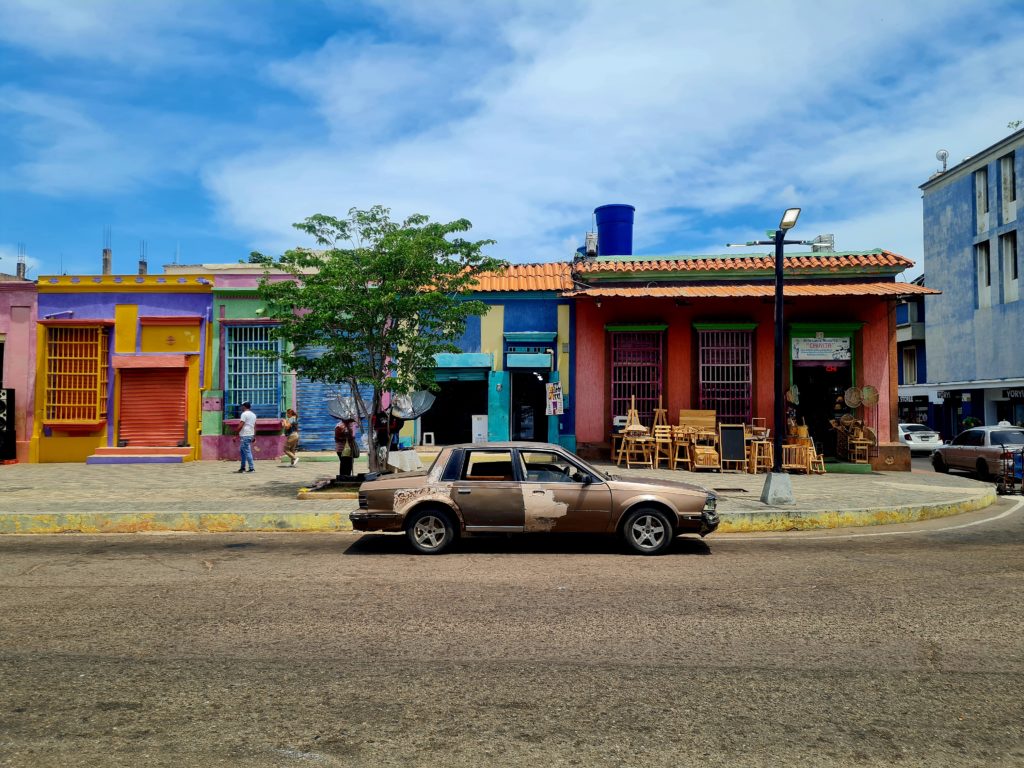
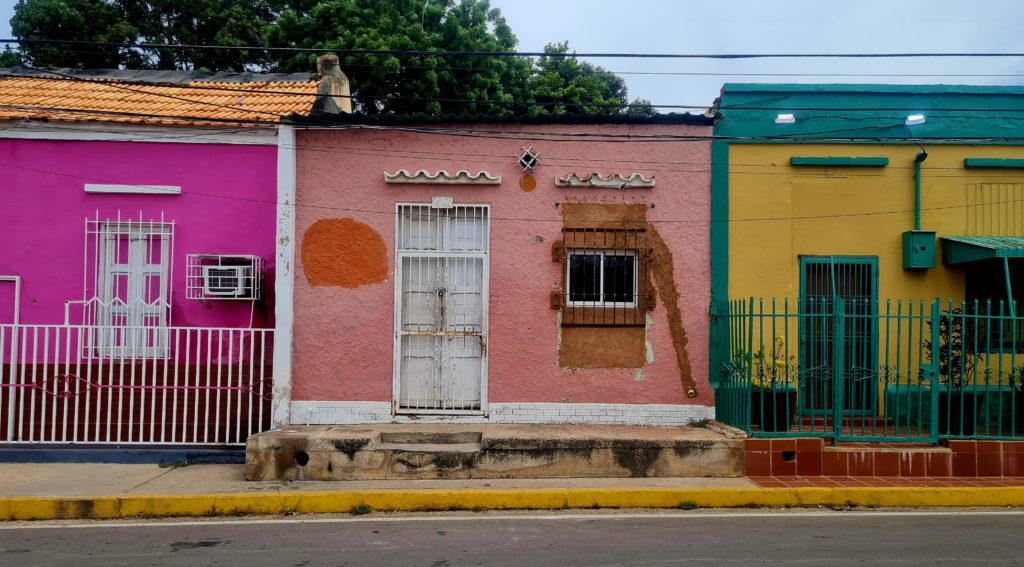
The next day, we arranged to meet up with a friend we got to know in Colombia. He wants to show us his city. The drive through Maracaibo is special: it feels like being in a US film from the 1970s. Old V8 Ford models rattle through the wide streets. The avenues are lined with shopping centres that were once modern, some of which are closed and close to falling into disrepair, while others are full of life and goods. This is completely unexpected.
The city seems empty; it was built for many more people than live there today. Tourism is rare, but there are still a few souvenir shops and street vendors. They curiously ask us where we come from and how we like it. They seem to not really want to sell us anything.
We escape the heat and take refuge in a café. The whole city runs on air conditioning because it is simply too hot. But this only works as long as the power is on. Everyone has access to it, and the electricity is free. It comes from gas turbines where excess gas is burned. There is nowhere else for it to go. But the systems are overloaded, the turbines are old and spare parts are difficult to obtain. So the power goes out sometimes, say the residents.
The café has electricity, it is pleasantly cool inside and there is delicious coffee and fruit juices. The prices are a little more expensive than we are used to in South America, but we can even pay by card.
Afterwards, we visit the Casa de la Capitulación museum next door. The official who works there gives us a guided tour free of charge. He is proud to be able to tell foreigners about the magnificent history of Gran Colombia’s independence from the Spanish Crown.
A green glowing lake
In the evening, we once again enjoy the view of the impressive 8.6-kilometre-long bridge – the second longest in South America. The green-glowing Lake Maracaibo, on the other hand, is not inviting for swimming. Beneath it lie some of the largest oil reserves in the world. Venezuela sits on immense riches. From 1929 onwards, Venezuela became the world’s largest oil exporter. Oil companies flocked to the country to extract oil, erected towers in the lake and the Orinoco Delta, and sold the oil all over the world. Until the 1970s, the whole country benefited from the money it brought in.
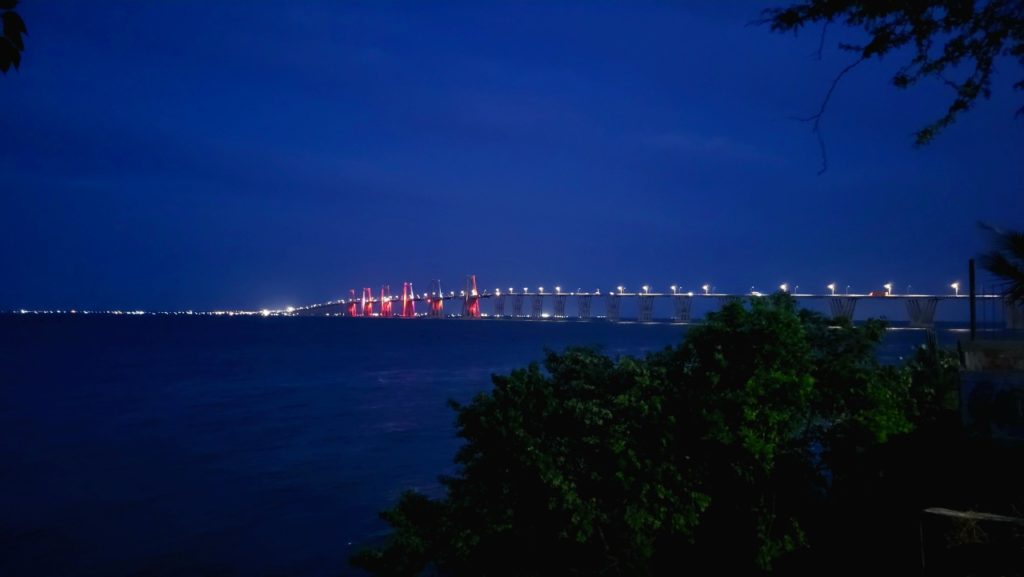
After the oil crisis, there was a wave of nationalisation, and PDVSA, the Venezuelan oil company, was founded. PDVSA generated such high profits that the money was distributed to the entire population. Young Venezuelans, they told us, received a budget from the state to travel around the world. However, this proved to be their undoing, as no one learned how to manage money. In addition, the oil company repeatedly had to contend with fluctuating oil prices. The recessions since the 1980s left the highly indebted company struggling. On top of that, maintenance was neglected.
When Venezuela changed its politics, it became increasingly isolated and its infrastructure began to rust. No one is maintaining it, and spare parts are nearly impossible to obtain due to international sanctions and mismanagement. Engineers from the oil company are now driving taxis, or those who can are leaving the country. However, the oil continues to seep out – and flow into the lake.
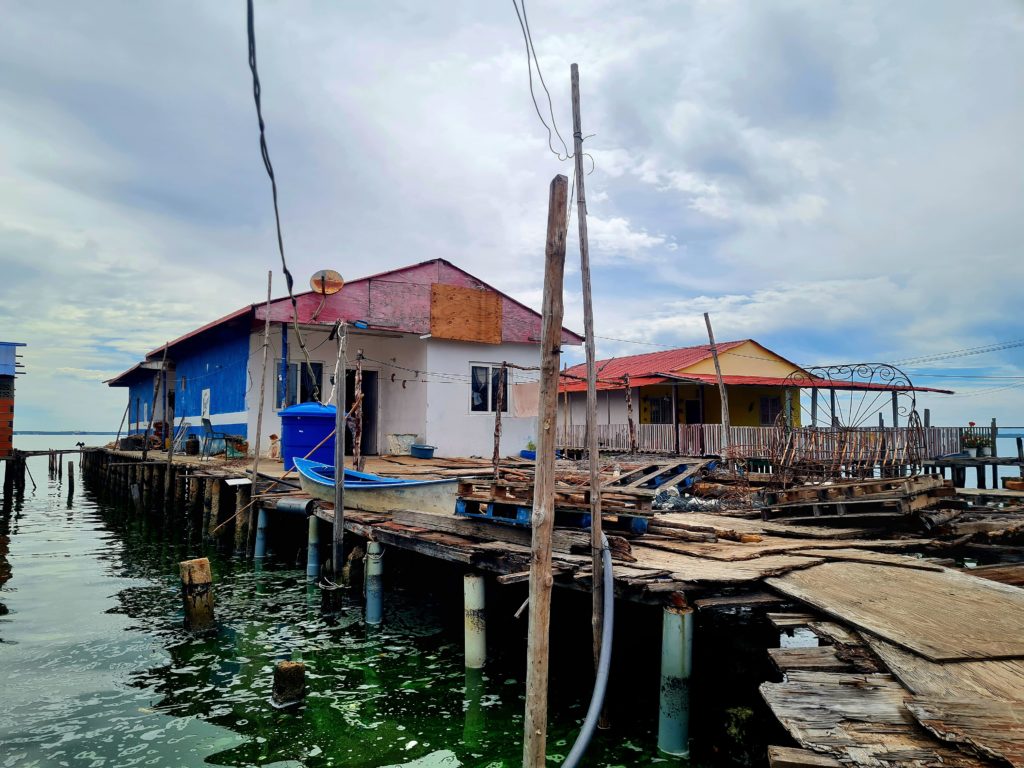
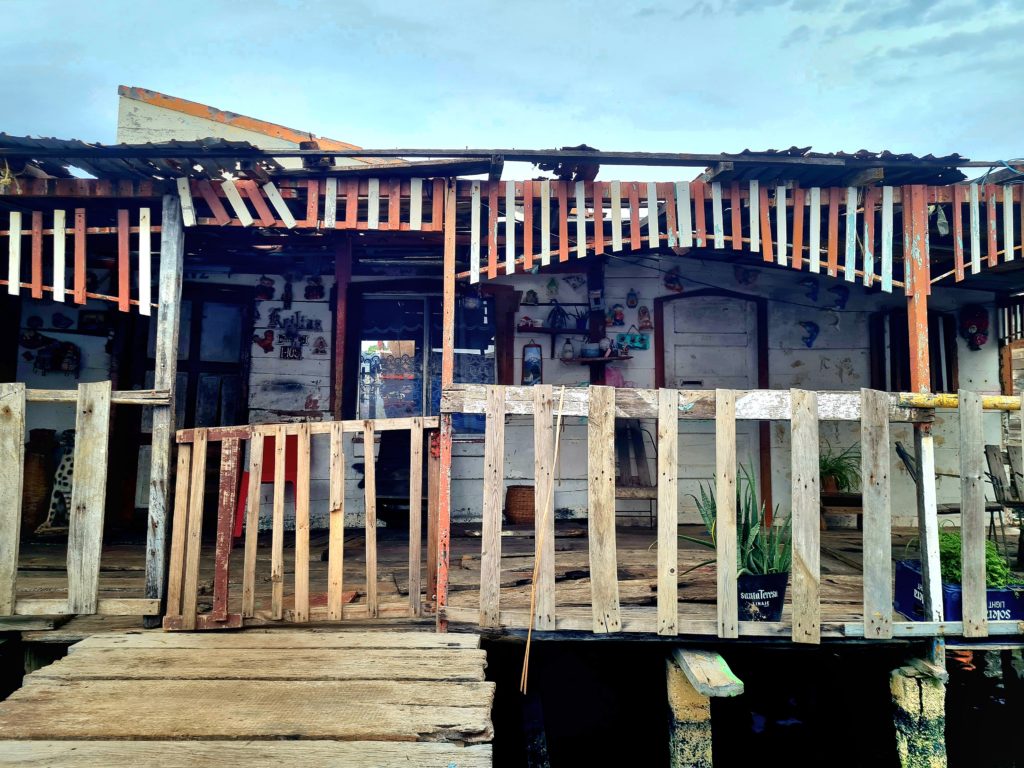
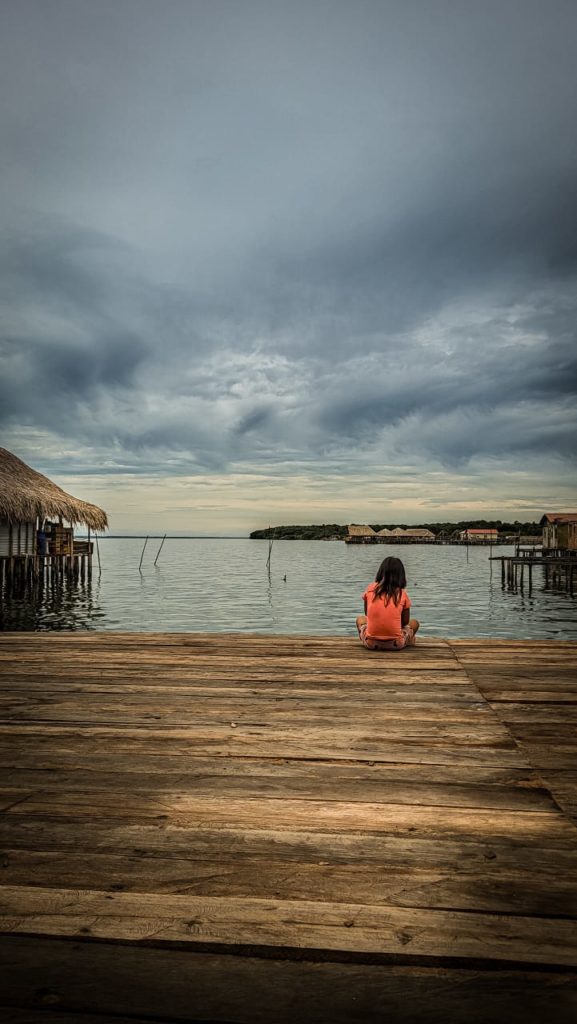
Empty roads driving through the city
The pollution is extreme. The villages built on stilts in the lake are beautiful, but there is a lot of rubbish around them. With the little they find, they build their houses or try to maintain them. Nevertheless, we decide not to eat fish in Santa Rosa del Agua. We continue driving through the city in an old Chevrolet Malibu. It jolts and rattles, and ‘Viva Venezuela’ blares from the speakers at full volume. The speedometer no longer works – we have a clear run through the town, with almost no traffic. An abandoned McDonald’s crumbles at the side of the road, it tells of better times.
We make a short stop and a woman gets out – there is room for up to six people. We continue our journey in the colectivo, the shared taxi. These are their public transport vehicles for short distances and most of them are old timers. It costs us very little, only 40 bolivars per person (40 US cents), and the taxi driver explains that he runs on gas. Petrol is too expensive, but gas is almost free. Petrol is also subsidised, but it is not always available, and the car’s consumption would also be immense, at least 25 litres per 100 kilometres.
Empanadas and rum
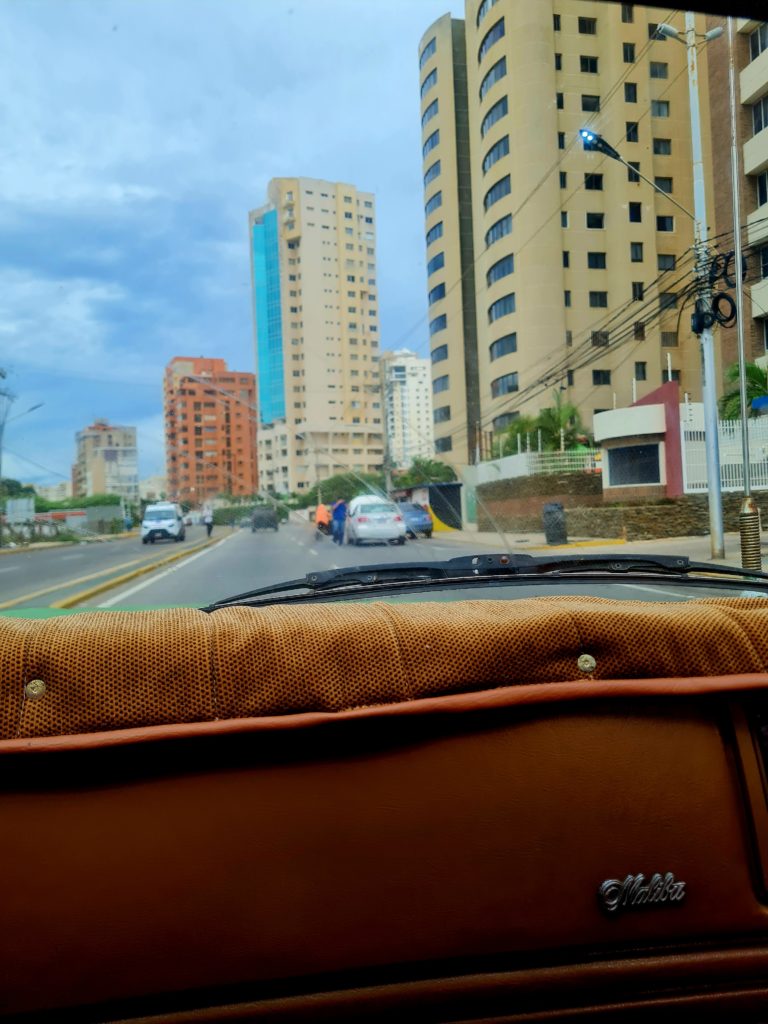
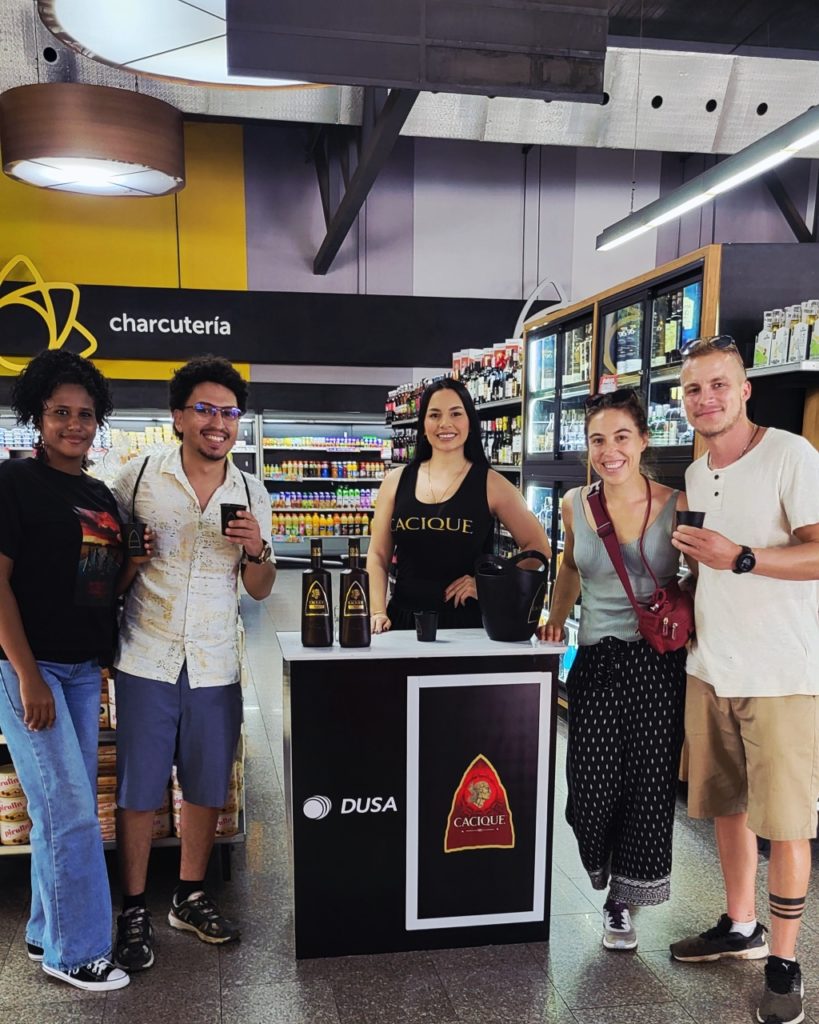
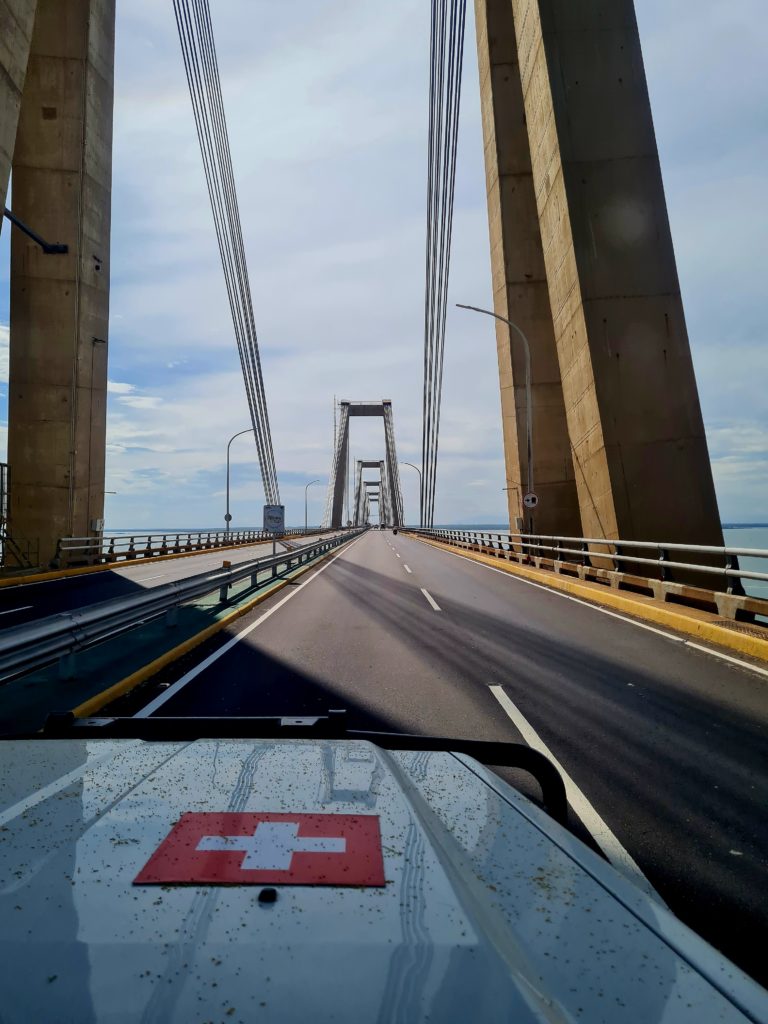
For lunch, we go to the supermarket’s food court. They serve large, meat-filled empanadas with Venezuelan tartar sauce. They are incredibly delicious – throughout the whole country. The supermarket is filled to the brim, you can buy everything there, the prices are marked in dollars and not necessarily cheap. But empty shelves? Not a chance. Right at the entrance, there is a stand where you can sample rum. We try rum with ginger ale and a splash of lemon for the first time. A drink that keeps on coming back throughout the entire trip.
In 2015, Venezuela struggled with extreme supply shortages. That’s where the images of long queues come from. There was nothing to buy, even if you had money. Everything was rationed. Even napkins were cut up to have more paper – if you could find any at all. Some people still do this today – habits are hard to change. Although Venezuela produces a lot itself, it also needed fertilisers for its agricultural economy, for example. These did not enter the country. No one could farm on a large scale anymore. People had to fight for survival.
Today, things look different. The city is still far too big for the number of people who live there. Many houses have fallen into disrepair or stand empty because their owners have emigrated. They are cheap to buy, even in the centre of Maracaibo. But although property is cheap, life itself is expensive in all of Venezuela.
Our answer: very good
We are amazed during our first few days in Venezuela. Things work differently here, not better or worse, but differently than we expected. The food is delicious, the service is surprisingly good, the markets are full and there are no queues at the petrol stations. And what we find particularly special is that the people are friendly, courteous, helpful, curious and not at all pushy. We have to actively approach them and ask if they have any questions, because their curiosity is written all over their faces: How do these tourists like Venezuela?
Our answer, even today: very much.
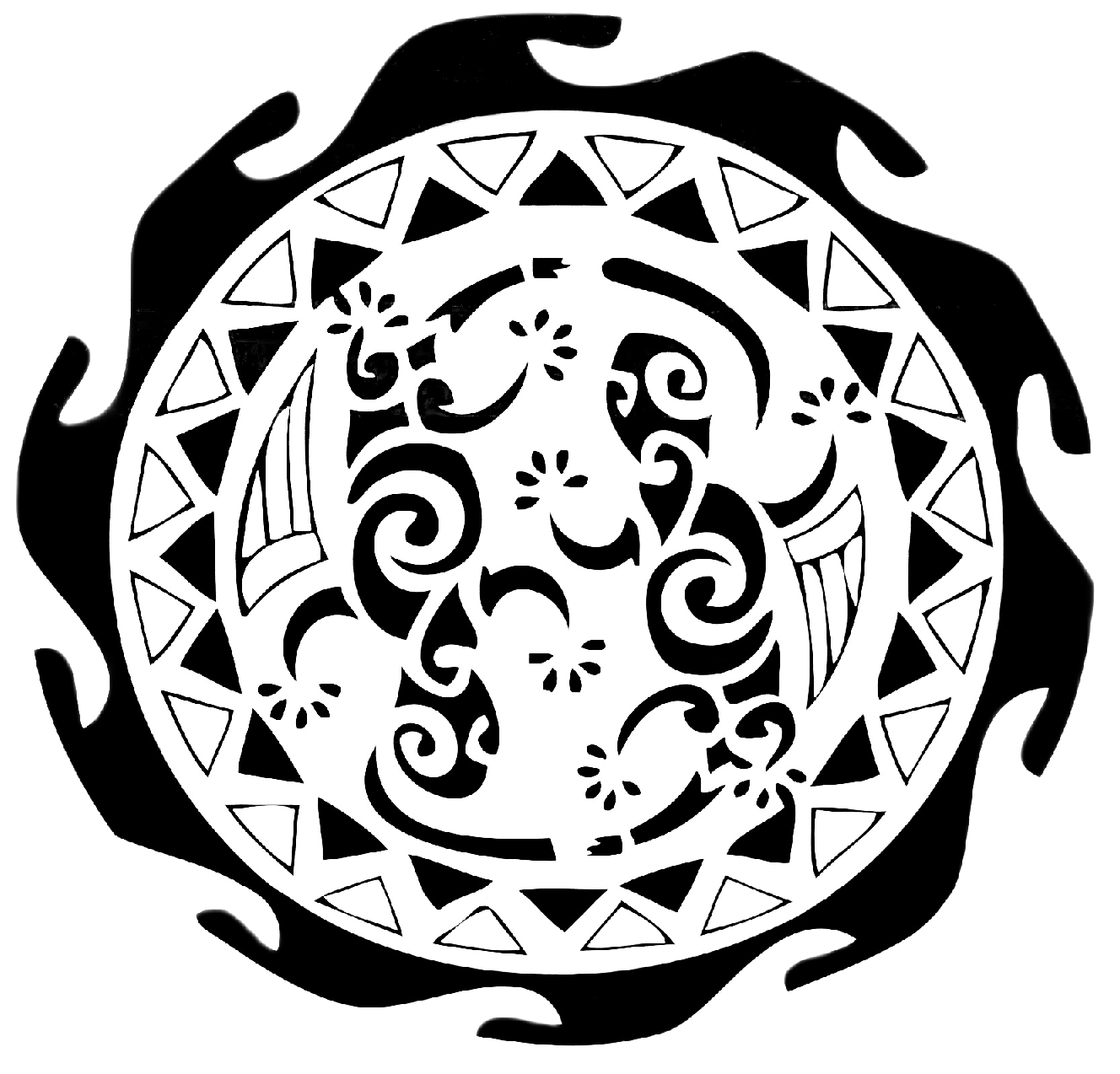
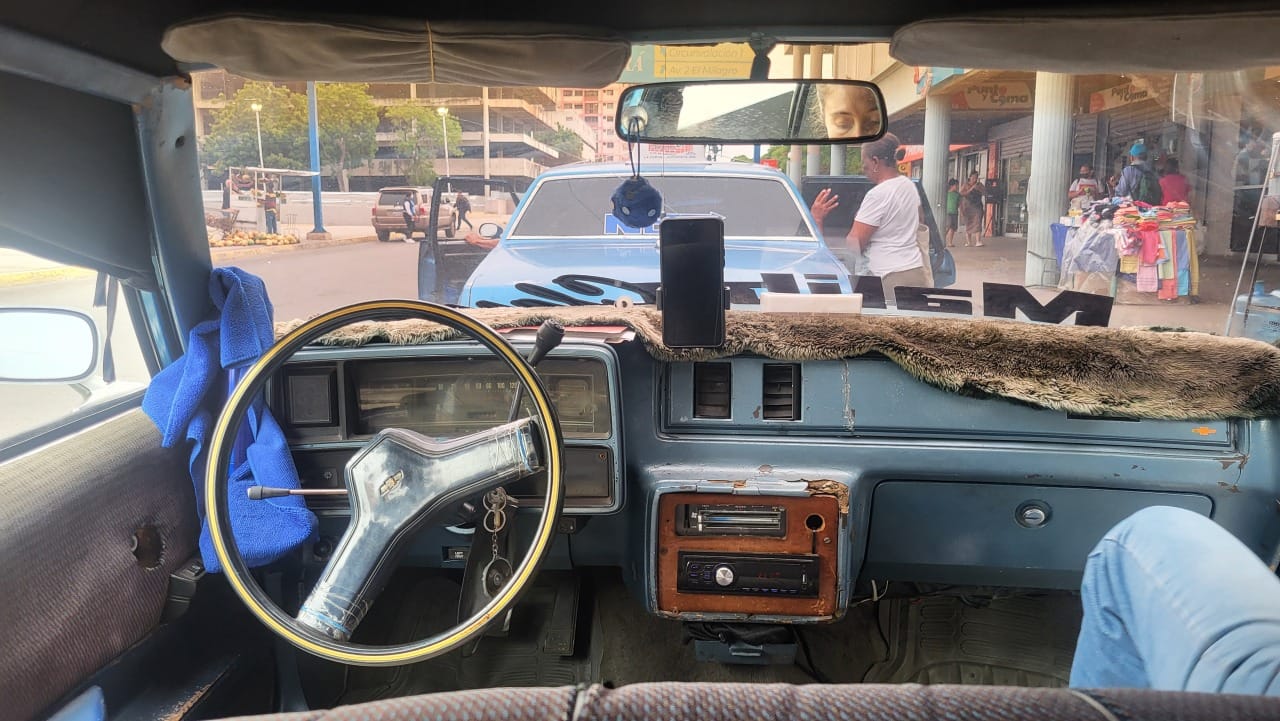
Pingback:Looking for gold in Venezuela – Travel & Wildlife